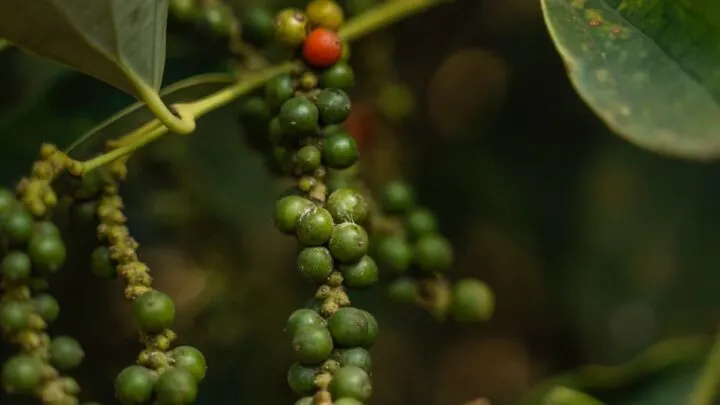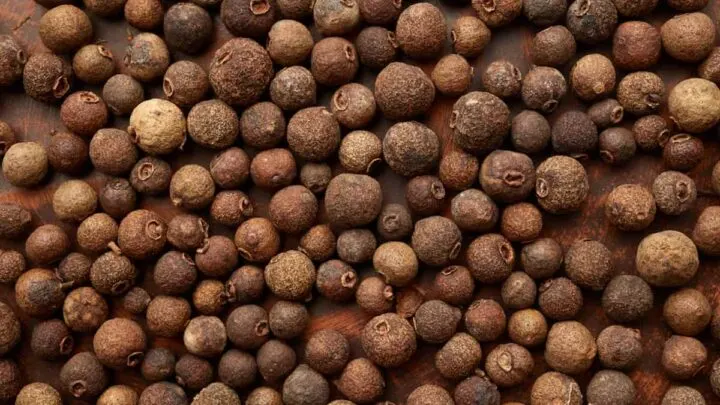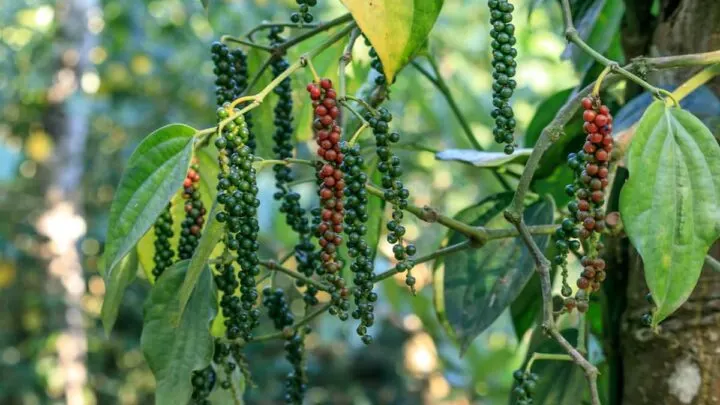Are you interested in growing your own black pepper? It can be easily done in the right conditions, and it’s fun too! Black pepper comes from the peppercorn plant or the pepper tree. The peppercorn plant is native to India or Southeast Asia and likes hot and wet climates. Unfortunately, nowhere in the US does it stay warm enough for long enough to grow peppercorn plants; however, that is what greenhouses are for.
Growing your own peppercorn is just like growing any other plant or vegetable. As long as you have the right conditions, it can be easily done, and it is a great way to have your own homemade table pepper. Growing peppercorn plants is a long process that takes years. Peppercorn plants won’t be ready to harvest until they are four years old but will keep producing for up to 20 years. So be ready to be in it for the long haul!
In this article, we are going to be discussing all things peppercorns. How to grow it, how to harvest it, and more. Stay with us!

Starting Peppercorn Seeds and Planting
Pepper plants need very warm climates that last pretty much all year long. If you live in an area where this doesn’t happen, you can still grow them in a greenhouse as long as you keep the inside temperature somewhere between 70-95 degrees Fahrenheit. Peppercorn plants are best started by seed, so let’s dive right into growing them!
Starting Seeds
Get your fresh peppercorn seeds and start them in a seed tray. It helps to soak the seeds in water overnight since their skins are so thick; this helps them loosen up to sprout. Keep the seed trays moist and under light for at least 14-16 hours a day. Germination may take up to a month, so be patient.
Transplanting Seeds
Once the seeds are about 6 inches tall, they can be planted into their final destination. Wherever they land, make sure the soil is nice, loamy, and full of organic matter. Peppercorns can be grown in a container, such as a pot or fabric grow bag.
They can also be planted directly in the ground in a raised bed. If your greenhouse has raised beds in it, they will go just fine in the beds, or you can move pots into the greenhouse. Peppercorn plants are very slow plants and won’t be ready for another four years from when they sprout.
Choose to put them in a place where they can grow for a long time without being moved. Larger fabric bags (10 gallons) are good because fabric bags promote solid root growth where the plant’s roots will not get rootbound.
However, this plant may last for up to 20 years, as a fabric bag may only last for three years. Your best option for planting peppercorns is to put them directly into the ground or in a raised bed.

Caring For Peppercorn Plants
Since peppercorn plants take such a long time to start producing, there isn’t a lot to do to maintain the plant. Your biggest job is making sure the temperature is perfect for the plant to thrive. Here are some tips for caring for peppercorn plants.
Environment
As we’ve talked about, the temperature for peppercorn plants to grow and produce should be anywhere from 70-95 degrees. If the temperature drops to below 50, the plant will stop growing. If the temperature stays under 50 consistently, the plant will die.
Peppercorns also need high humidity, so keep that in mind wherever you are growing them. If you live in a dry area, perhaps put a humidifier in your greenhouse where the plants are.
Light
If your plants are growing in an area where the temperature is on the hotter side, peppercorn plants do better with partial shade, only needing about 6 hours of light a day. If the temperatures are mild, they can do with full sun.
Mulch and Water
Because peppercorn plants like such moist environments, mulch can help you so much in keeping the soil nice and damp. This way, you won’t have to water as much. Remember that peppercorn plants never like to dry out, so make sure you are constantly watering to keep the soil not soaked but wet.

Fertilizer
Peppercorn plants don’t need too much extra fertilizer, especially if you initially put the plant in strong soil. You can feed your peppercorn plants twice a month with a well-balanced NPK (nitrogen, phosphorus, and potassium) mixture during the spring and summer.
Peppercorn plants bloom in the summer, and this is when you can give them some liquid feed. A good example of the ratio you can feed them during this time would be 5-10-10.
Trellis
Peppercorn plants are very viney, and their vines can grow to be 13 feet long. To keep the branches supported, grow them near the trellis or put a trellis around the plant for extra help. You can use support beams, fencing, or even just bamboo stakes.
Harvesting Peppercorns
The most exciting part of growing anything is when you get to harvest its beautiful fruit. Since peppercorns take such a long time to start blooming, this experience may be even more exciting. Let’s look at the steps to harvesting the peppercorns.

Color
Peppercorns grow together in clumps and are green as they grow. When they are ready for harvest, the peppercorns will start to redden. You can harvest the green peppercorns, but you will have green pepper, and the taste is very mild. For original black pepper, wait until the fruit reddens.
Dry
The green peppercorns do not need to be dried; they can be pickled and saved. Red peppercorns, once harvested, can be set out on a tray in the sun or put in a dehydrator until they become hard black little balls (what you think of when you think of peppercorns!)
Grind (optional)
You can now choose to grind up all your peppercorns and have pepper ready to be used on any dish you choose, or you can also save the peppercorns whole and grind them as you go.
Storing
If you choose to keep your peppercorns whole, you must ensure they are stored in an airtight DRY container. If any moisture is inside the container, the peppercorns are very susceptible to mold.
Final Thoughts
Peppercorns are a beautiful slow-growing plant. Although it takes years for the peppercorns to be ready to harvest, having homegrown pepper at your table is worth it. It is a long but fairly simple process as long as you make sure they have the warmth and humidity they need to grow happily.
If you have extra room in a greenhouse, or maybe you’re in the right climate, why don’t you try to grow black pepper? Happy gardening!

Hi there, my name is Allie and welcome to my blog; GareningWithAllie!
Much of what you see written here is just our personal experiences with gardening. Along with the content I write here, there is also a unique collection of gardening topics covered by some of our close friends. I hope you find everything you read here to be helpful, informative, and something that can make your gardening journey the most lovely experience ever! With that said, Happy Gardening!
